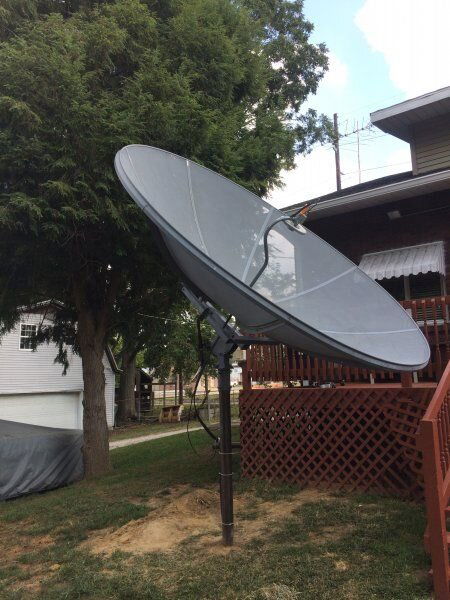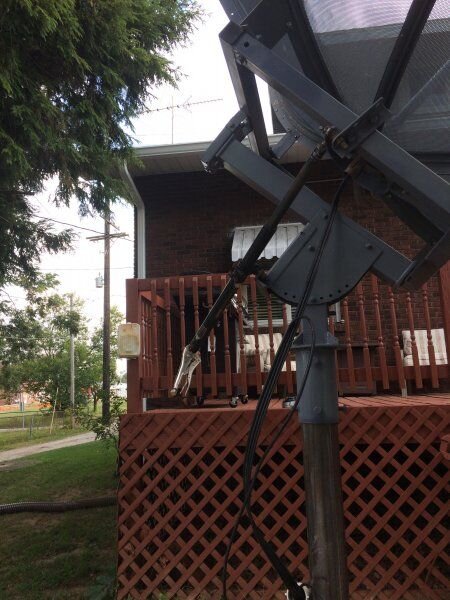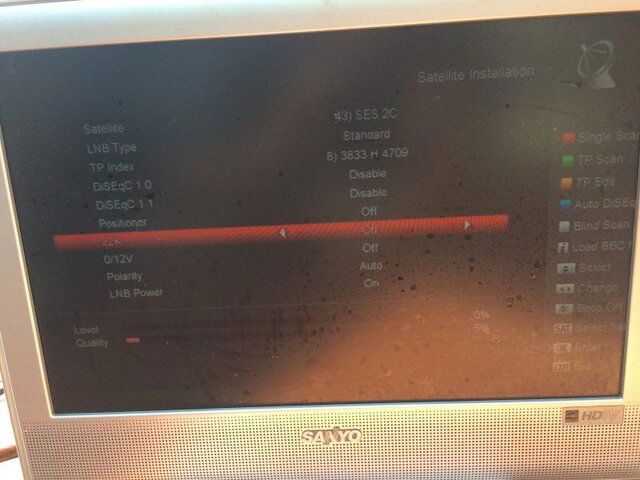How do I get started
- Thread starter coltonjared
- Start date
- Latest activity Latest activity:
- Replies 348
- Views 36K
You are using an out of date browser. It may not display this or other websites correctly.
You should upgrade or use an alternative browser.
You should upgrade or use an alternative browser.
- Status
- Please reply by conversation.
Optical sensor looks like thisI'm guessing this is an optical sensor
There is another type of sensor that I have seen in old Saginaw actuators. The Hall Effect sensor. Also a three wire sensor it uses an interrupted magnetic field instead of light as in the optical sensor to generate the switching signal from the transistor. I have a pic of a Sag with that sensor inside but not one of the sensor itself.
Looks like the motor is burnt up
Not necessarily. You can probably clean that up very carefully with some sandpaper on the steel laminations to lightly remove rust, and a toothbrush used very carefully in other areas. If the motor brushes are too far gone, you should be able to get replacements that will work for you.
I've already trashed it. It was humming before and move just a little but after opening it up it doesn't do anything. The guy I got it from said he tried to test it before I came over and he said it started to move then nothing so I wonder if he overloaded it cause he didn't say how much power he had hook to it
I've already trashed it. It was humming before and move just a little but after opening it up it doesn't do anything. The guy I got it from said he tried to test it before I came over and he said it started to move then nothing so I wonder if he overloaded it cause he didn't say how much power he had hook to it
Ugh, maybe he plugged it in the wall direct...
This isn't crazy. 4 actuators and all of them broken in one way or another and no way to but a working one together with all the parts I have.
This isn't crazy. 4 actuators and all of them broken in one way or another and no way to but a working one together with all the parts I have.
Well, most of those actuators are probably as old as you, and have been outside not being used for 20+ years. Just keep looking around more and you'll find a good one. I have to admit I've never been as unlucky as you in finding old ones that were good, but I'm sure it depends a lot on the area you are located in.
I rigged up a hand crank to move the dish till I find a actuator. Plan on getting the lnbf set tomorrow
My first c-band dish way back in 1984 had a threaded-rod handcrank. I marked it with permanent marker at each sat position. Back then they were at 4 degrees apart, and there weren't so many of them.
err2 is communications failure I believe. Double check your wiring on both ends at the Superjack as well as the Vbox and make sure the drain wire is grounded at one end not both. I had the same problem and once the drain wire was grounded everything was fine. Also double check your wiring that your not mixing the motor leads on one end with the sensor leads on the other. That will also give a comm failure error and probably fry the reed switch.
It would run the motor if it was pulled off the tube as soon as I slide it back on I'd get the err and it trying to work. Pull it back off work just fine
Took a shot at tuning it and nothing. Probably help if I had a inclinometer and a signal meter to verify if everything was correct from the last owner. Not sure how to adjust it cause the online manual is different from what I have.
Attachments
It's really not rocket science. If you haven't seen the link before take a look at this c-band setup guide; C-Band Polar Mount Dish Installation Guide - TVROSat
You can probably 'assume' that the dish is already set on due south which is a big plus. You can probably also assume that the declination has already been set and you don't have to monkey with that. If you've already turned bolts and screws and moved everything around then you have to start from scratch. Get a digital inclinometer and go to the section that deals with rough tuning and go from there. Haven't read through the whole thread but you need an inclinometer and really need [imo] a good satellite meter otherwise your pretty much blind.
You can probably 'assume' that the dish is already set on due south which is a big plus. You can probably also assume that the declination has already been set and you don't have to monkey with that. If you've already turned bolts and screws and moved everything around then you have to start from scratch. Get a digital inclinometer and go to the section that deals with rough tuning and go from there. Haven't read through the whole thread but you need an inclinometer and really need [imo] a good satellite meter otherwise your pretty much blind.
If you didn't move the dish very far, then the angles are probably reasonably close. I would guess you are not aligned to true south. I am lucky that my true south satellite is just a couple of clicks away from dead center on the dish. Mark where you are now on the pole and mount, then make a reasonable guess how far from center you need to move the dish to hit your true south satellite. Then loosen the mount to pole bolts, just enough to be able to twist, ever so slightly while watching for any sign of signal. Just be sure to use an active transponder on the satellite in your receiver.
1/2 a degree is a long ways at 22,500 miles above the equator. So, make very small moves.
1/2 a degree is a long ways at 22,500 miles above the equator. So, make very small moves.
- Status
- Please reply by conversation.
Similar threads
- Replies
- 0
- Views
- 778
- Replies
- 37
- Views
- 4K
- Replies
- 10
- Views
- 2K
- Replies
- 50
- Views
- 9K









